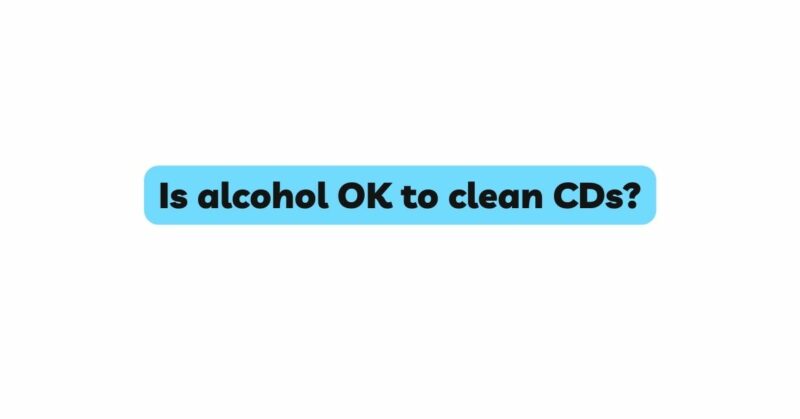Compact Discs (CDs) remain a preferred medium for audio storage and playback, offering exceptional sound quality. However, over time, CDs can accumulate contaminants that affect playback, necessitating proper cleaning techniques. One method that has gained attention is the use of isopropyl alcohol. In this comprehensive article, we’ll explore the merits, precautions, and best practices of using isopropyl alcohol to clean CDs effectively while safeguarding their integrity.
Understanding the Role of Isopropyl Alcohol:
Isopropyl alcohol, commonly known as rubbing alcohol, is a versatile cleaning agent. Its low water content and high evaporation rate make it a popular choice for cleaning electronic components, including CDs. When used correctly, isopropyl alcohol can effectively remove dirt, fingerprints, and other contaminants from CD surfaces.
Benefits of Using Isopropyl Alcohol:
- Effective Degreaser: Isopropyl alcohol acts as a powerful degreaser, effectively dissolving oils from fingerprints and smudges.
- Quick Evaporation: Isopropyl alcohol evaporates quickly, reducing the risk of moisture damage to CDs.
- Residue Removal: Isopropyl alcohol can remove residue from sticky substances without leaving behind additional residue.
Precautions and Best Practices:
While isopropyl alcohol can be a valuable tool for CD cleaning, it’s essential to approach its use with caution to avoid potential damage:
1. Concentration Matters:
Use isopropyl alcohol with a concentration of 70% or higher. Lower concentrations may not be as effective in removing contaminants.
2. Spot Test:
Before applying isopropyl alcohol to an entire CD, conduct a spot test on a small, inconspicuous area to ensure it doesn’t cause damage or discoloration.
3. Application Technique:
Apply isopropyl alcohol sparingly to a soft, lint-free cloth, ensuring it’s only slightly damp, not soaked. Excess moisture can seep into the CD’s edges and lead to damage.
4. Straight Motions:
When wiping the CD’s surface, use straight motions that radiate from the center outward. Avoid circular motions that can exacerbate scratches.
5. Gentle Pressure:
Apply minimal pressure while cleaning. The goal is to allow the isopropyl alcohol to do the work without risking scratching the CD.
6. Dry Thoroughly:
After cleaning, allow the CD to air dry or use a clean, lint-free cloth to gently pat it dry. Make sure the CD is completely dry before playback.
7. Moderation:
Use isopropyl alcohol for occasional deep cleaning or to address stubborn contaminants. Overuse can potentially damage the CD’s surface over time.
8. Storage and Handling:
Always store CDs in their cases to prevent new contaminants from settling on the surface. Handle CDs by their edges or center hole to avoid transferring oils and dirt.
When to Avoid Isopropyl Alcohol:
While isopropyl alcohol is generally safe for CD cleaning, there are situations where it’s best to avoid using it:
- Severely Scratched CDs: CDs with deep scratches may be more susceptible to damage from isopropyl alcohol. Consider professional restoration services for such CDs.
- Valuable or Irreplaceable CDs: If a CD holds sentimental or historical value, consider seeking professional advice before using isopropyl alcohol.
Conclusion:
Isopropyl alcohol can be a valuable ally in maintaining the integrity of your CD collection. When used correctly and with caution, it effectively removes contaminants, ensuring optimal playback quality. By following the precautions and best practices outlined in this article, you can confidently use isopropyl alcohol to clean your CDs while preserving their lifespan and sound fidelity. Always remember that a careful and informed approach is key to enhancing the longevity and quality of your cherished CDs.

